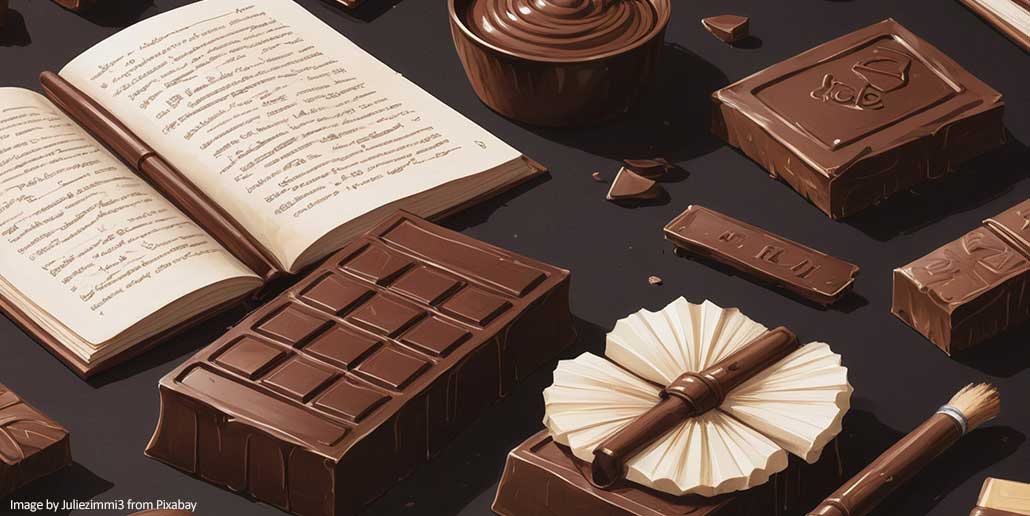
Chocolate Myths and Legends
Chocolate, a universally adored treat, has a history as rich and complex as its flavour. Its origins trace back to ancient civilizations in Mesoamerica, where it was revered not just as food but as a substance of profound cultural and mystical significance. Over centuries, chocolate has accumulated a fascinating tapestry of myths and legends, particularly surrounding its status as an aphrodisiac and its role in superstitions across cultures. Let’s explore these intriguing beliefs that have shaped the perception of chocolate.
Why Chocolate Was Once Believed to Be an Aphrodisiac
The belief in chocolate’s aphrodisiac properties dates back to the Mayan and Aztec civilizations. For these cultures, cacao was more than just a crop; it was a divine gift. The Mayans called cacao “the food of the gods,” and the Aztecs associated it with fertility and love. Montezuma II, the Aztec emperor, famously consumed vast quantities of cacao daily, reportedly to enhance his virility. Served as a frothy, spiced drink, cacao was believed to stimulate the heart and awaken passions.
The aphrodisiac myth gained traction in Europe after cacao was introduced in the 16th century. Europeans transformed cacao into sweetened chocolate, which quickly became a luxury for the elite. Its rarity and exotic origins added to its mystique, and it was often associated with romance and seduction. Casanova, the infamous 18th-century lover, was said to favour chocolate over champagne for its ability to enhance his amorous adventures.
Modern science, while debunking the exaggerated claims, provides some insight into why chocolate might have been linked to love and passion. Chocolate contains phenylethylamine (PEA), often referred to as the “love chemical,” which the brain produces in greater quantities when people are in love. It also has theobromine and caffeine, which can boost energy and mood, creating a sense of pleasure and well-being.
Superstitions About Chocolate in Different Cultures
Chocolate’s allure has given rise to numerous superstitions, reflecting the cultural contexts in which it was consumed. Across the world, people have ascribed magical and mystical properties to chocolate, shaping traditions and beliefs that endure to this day.
Mesoamerican Rituals
In its native Mesoamerica, cacao played a central role in religious and ceremonial practices. The Mayans and Aztecs believed that cacao beans were imbued with divine energy. They were used as offerings to the gods and in sacred rituals, including marriage and fertility ceremonies. Drinking cacao was thought to provide spiritual enlightenment and connect individuals to the divine.
European Folklore
As cacao spread to Europe, it retained an air of mysticism. During the 17th and 18th centuries, chocolate was believed to have healing powers. Apothecaries prescribed it as a remedy for various ailments, from melancholy to digestive issues. Some even claimed that chocolate could ward off evil spirits and protect against curses. In England, carrying a piece of chocolate was thought to bring good luck and attract positive energy.
African and Caribbean Traditions
In African and Caribbean cultures, where cacao cultivation became prominent during the colonial era, chocolate was often intertwined with local beliefs about magic and spirituality. In some communities, cacao was used in rituals to invoke protection or bring prosperity. Its use in offerings or charms was seen as a way to appease ancestral spirits or gods.
Modern Superstitions
Even today, chocolate holds a special place in superstitious practices. For example, gifting chocolate on Valentine’s Day is seen as a gesture of love and commitment, rooted in the belief that chocolate can ignite passion. In some cultures, spilling cocoa powder is considered bad luck, while dreaming of chocolate is thought to symbolize indulgence or a sweet turn of events in one’s life.
The Enduring Mystique of Chocolate
The myths and legends surrounding chocolate reveal humanity’s enduring fascination with this remarkable substance. From its sacred origins in Mesoamerican rituals to its romantic associations in European courts, chocolate has been a symbol of love, power, and mystery. While modern science has clarified much about chocolate’s properties, its mythical status persists, reminding us that some of its magic lies in the stories we tell.
As we savour a piece of chocolate today, we partake in a legacy steeped in history, culture, and a little bit of enchantment. Whether or not it’s truly an aphrodisiac or a talisman of good luck, chocolate continues to captivate and inspire, proving that some legends are as enduring as they are sweet.

